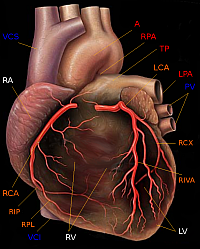Researchers at University of Leicester in the U.K. and Singapore medical device manufacturer HealthSTATS International developed a new method of non-surgically measuring blood pressure near the heart. The team published their findings in this week’s issue of the Journal of the American College of Cardiology (paid subscription required).
The traditional cuff-style blood pressure monitor inflates around the upper arm, temporarily interrupting the flood of blood in the brachial artery. This impedance enables the monitor to read blood pressure when the heart beats — called systolic pressure — and between beats, known as diastolic pressure. Both systolic and diastolic readings make up the blood pressure measurement, e.g. “120 over 80.”
Reading blood pressure on the arm is simple and convenient, but it serves only as an indicator of potential cardiac problems. A better measurement would be of blood pressure on the large aorta artery, originating at the heart’s left ventricle, since high blood pressure at that location would be a more direct indicator of trouble. This more direct measure called Central Aortic Systolic Pressure or CASP, however, normally requires access to the chest cavity, which means using an invasive procedure with inserting a catheter.
Because of varying factors between individuals and increasing stiffness of arterial walls with age, there was up to now no calculable method of computing CASP from the traditional brachial blood pressure measurement. The Leicester-HealthSTATS team has discovered a way of making that connection.
The researchers devised its method of indirectly measuring CASP from the radial artery in the wrist, using a process known as arterial tonometry. This method measures the pulse wave, not just the rate, which provides enough data to be able to determine aortic blood pressure from a measurement of brachial blood pressure.
The technology, made by HealthSTATS, includes a measurement pad that fits on a band that looks and feels like a wristwatch. The subject straps the measurement pad over the radial artery and wears it for 24 hours, to account for periods of excitement or strenuous exercise.
The research team devised an algorithm for computing CASP from the radial artery pulse waves and traditional brachial blood pressure measures. The team then validated the new indirect CASP measures with the more direct and invasive catheter measures, which showed a 99 percent correlation between the two methods.
Read more: Trial: Monitor Implant Lowers Heart Failure Hospitalization
* * *


 RSS - Posts
RSS - Posts
You must be logged in to post a comment.